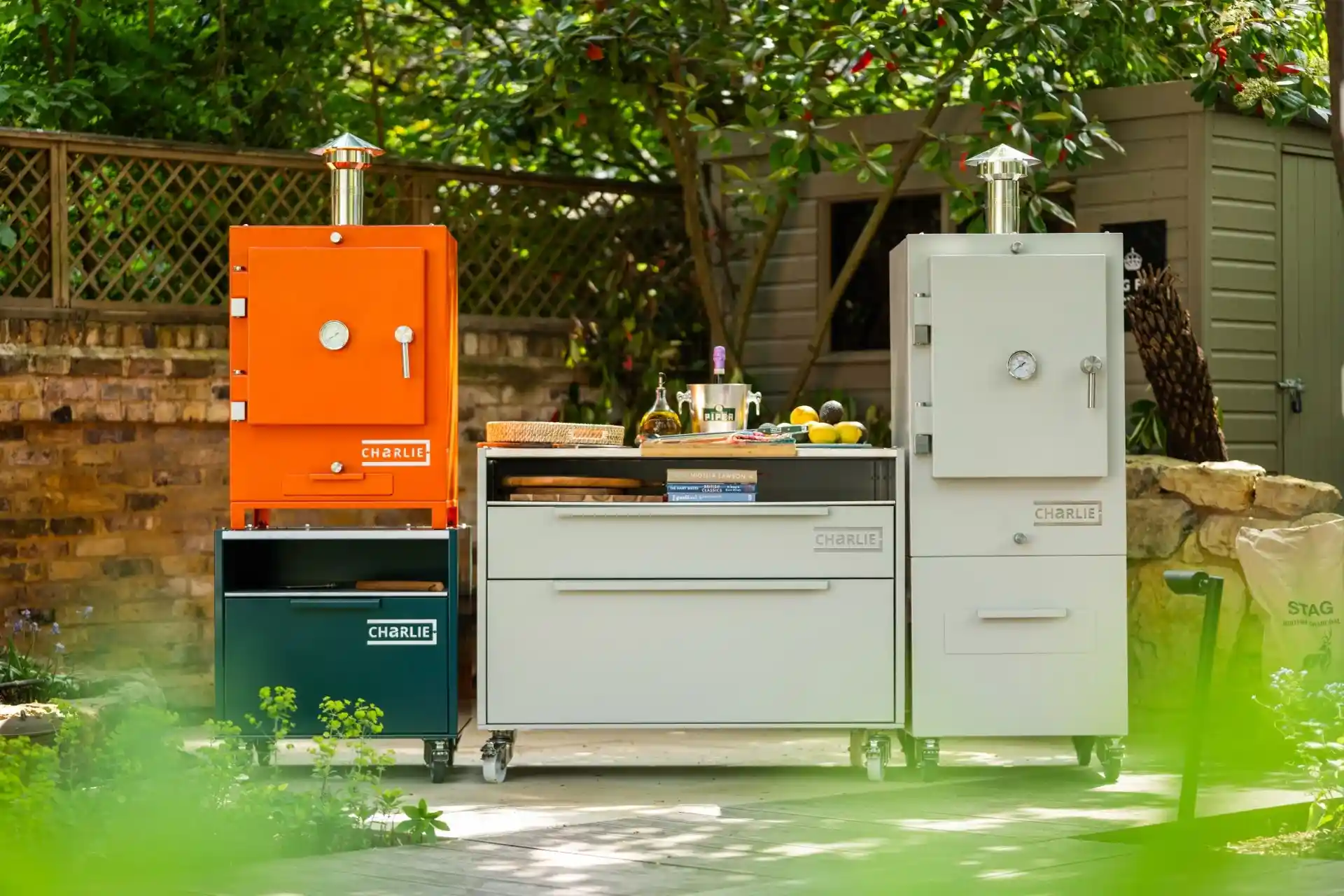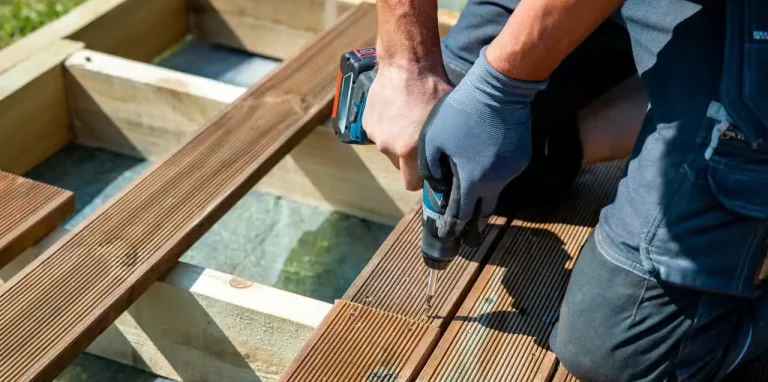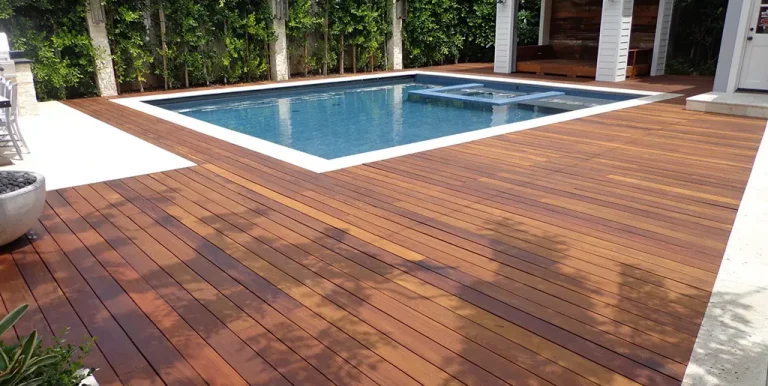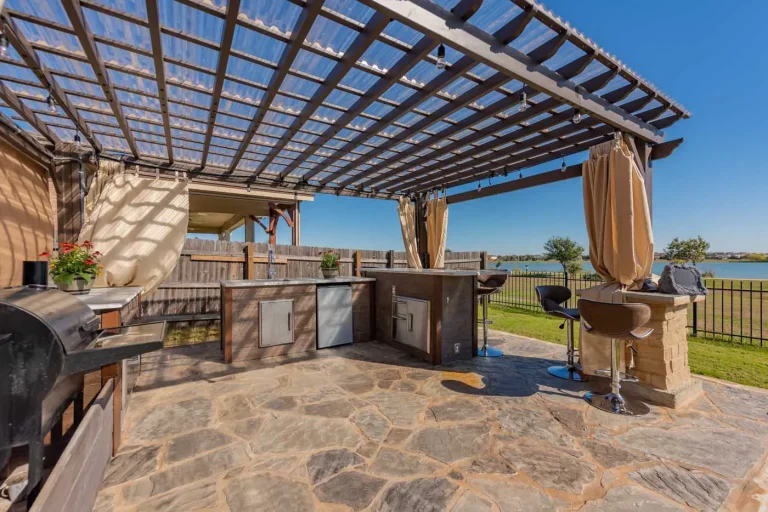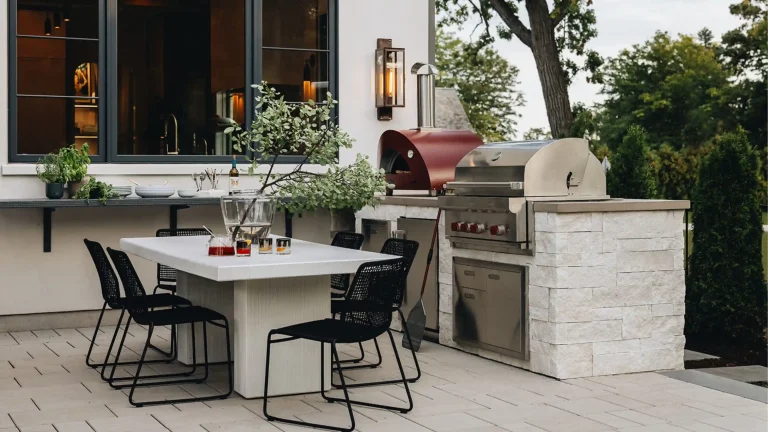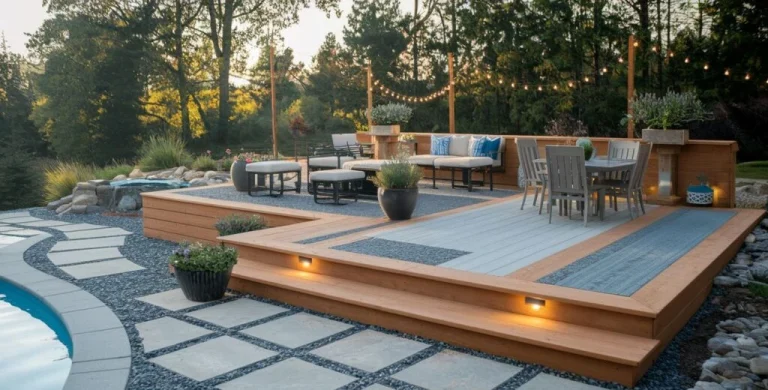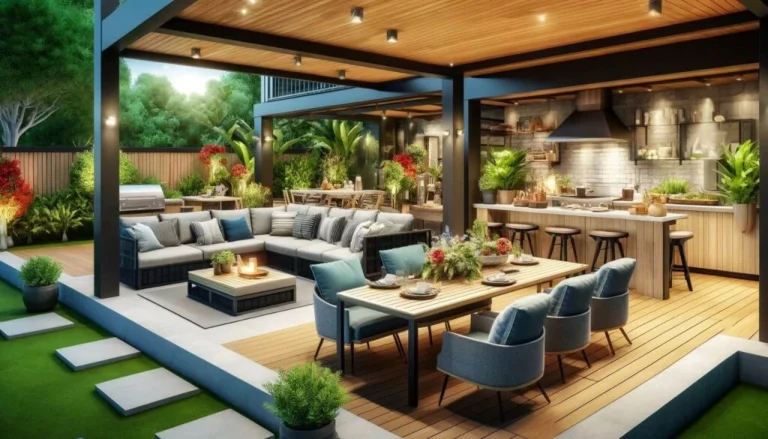Built-In Outdoor Pizza Oven Kitchen: Design Guide & Top Products
What Is an Outdoor Kitchen with a Built-In Pizza Oven
An outdoor kitchen with a built-in pizza oven refers to a custom or semi-custom cooking station where the pizza oven is integrated into the structure, stone, masonry, or cabinetry rather than being a freestanding or portable unit. The oven becomes part of the architectural layout, often paired with countertop space, prep zones, storage, sinks, and other cooking appliances.
Built-in pizza ovens can use wood, gas, electric, or hybrid fuel types. They may be dome-style, barrel-style, or modular insert ovens. The advantage of integrating the pizza oven into the kitchen setup is the smoother workflow, clean aesthetic, and permanence of installation that aligns with the outdoor living space.
Key Design Considerations for Pizza-Oven Outdoor Kitchens
Fuel Type & Performance
Choosing the cooking fuel is one of the earliest decisions. Wood-fired ovens produce traditional flavor and intense heat (often 700-900 °F), ideal for Neapolitan-style pizzas. Gas or propane versions offer faster startup and easier control. Electric or hybrid ovens may be suitable where restrictions or convenience matter. According to Sur La Table’s buyer’s guide, dome geometry helps reflect heat evenly and ensures efficient cooking in all fuel types.
Your choice should consider local fuel availability, building regulations, and desired flavor outcomes.
Structural Support & Heat Insulation
Pizza ovens are heavy, especially masonry or stone models. The base must support several hundred kilograms, incorporate fire-rated insulation, and account for expansion. Insulating layers (vermiculite, ceramic fiber) prevent heat from transferring to underlying structures.
In addition, you must provide a heat break or buffer between the oven and sensitive surfaces like cabinetry or finish materials.
Ventilation & Chimney
Correct airflow is critical. Wood or solid-fuel ovens especially require chimneys or flues to draw smoke upward. A well-designed chimney ensures fire burns well and smoke does not intrude on seating or covered areas. Propane or gas ovens may require less venting but still benefit from exhaust management.
Positioning, height, and clearance from structures are essential for safety and comfort.
Layout & Site Integration
Decide where to place the pizza oven relative to counters, prep areas, dining zones, and main house access. Consider how traffic flows ideally; ingredients, cooking, and serving occur in a loop. Avoid placing ovens where smoke or heat may interfere with neighboring spaces.
Also consider sun orientation, shading, and sight lines; an oven can become a visual focal point of the patio or landscape.
Material Finishes & Weather Resistance
Choose materials that endure the outdoor environment: stone, brick, stucco, or stainless steel. The finish must tolerate thermal cycling, moisture, and UV exposure. Avoid materials prone to spalling when heated repeatedly.
Sealants and joint design should resist water infiltration while tolerating expansion.
Benefits of a Built-In Outdoor Pizza Oven Kitchen
Superior Flavor & High-Temperature Cooking
A major benefit is that pizza ovens reach much higher temperatures (often 700–900 °F or more), producing crispy crusts with perfect char in minutes, something standard home ovens can’t match. The stone or refractory floor retains heat, cooking from beneath, while radiant dome heat finishes toppings.
You gain consistent crust texture, better moisture control (less sogginess), and an authentic wood-fired flavor when using wood models. Many enthusiasts say this elevated performance alone justifies the investment.
Versatility Beyond Pizza
Though named for pizza, built-in ovens can roast meats, bake bread, grill vegetables, and even cook desserts. The high, consistent heat environment opens culinary possibilities beyond pizza.
You could smoke a brisket, sear steaks, bake lasagnas, or roast root vegetables,,s turning your outdoor kitchen into a full cooking center.
Elevated Aesthetic & Outdoor Centerpiece
A stunning masonry pizza oven becomes a visual an, chor a design statement that expresses style, charm, and luxury. It often becomes the heart of the outdoor living area, drawing attention, conversation, and inspiration.
Many homeowners incorporate decorative stone, archways, or accent lighting to make the oven a focal point. It enhances curb appeal and the “wow factor” of your backyard.
Long-Term Durability & Longevity
Well-constructed built-in ovens outlast many freestanding units. Masonry ovens resist corrosion, warping, or mechanical damage. With proper insulation and materials, they handle decades of heating cycles and outdoor exposure with minimal maintenance.
Better Outdoor Living & Social Experience
Cooking in an outdoor pizza oven encourages gathering and engagement. Instead of being stuck indoors, you entertain while preparing your meals. Pizza nights become social events, with guests watching dough spin, toppings go on, and pizza emerge fresh.
It fosters connection, shared experience, and enjoyment of your outdoor space.
Energy Efficiency & Home Cooling
Using an outdoor oven keeps heat outside your home, reducing reliance on indoor ovens or HVAC systems. Because high temperatures are generated outdoors, your home interior stays cooler, especially in warm climates.
In sum, built-in pizza ovens deliver performance, versatility, beauty, and lifestyle value, making them an attractive upgrade to your outdoor kitchen.
Planning & Budgeting Tips
Before jumping into construction, plan carefully. Estimate costs of foundation, oven shell, insulation, chimney, counters, gas or venting systems, and labor. Typical budgets for fully built-in pizza kitchen setups range widely from modest prefabricated units to high-end custom masonry builds.
Allow contingencies (10–20%) for surprises. Include permits, structural engineering, and site prep in your budget. Survey local building codes or HOA rules, especially around wood-burning appliances or chimney height.
You may phase the project, install the pizza module first, a n add counters and cabinetry later if budget constraints exist.
Top Built-In Pizza Oven Products for Outdoor Kitchens
Below are five real-world, globally recognized oven modules or units ideal for integration into outdoor kitchens.
1. GASMATE Portofino 16″ Gas Pizza Oven
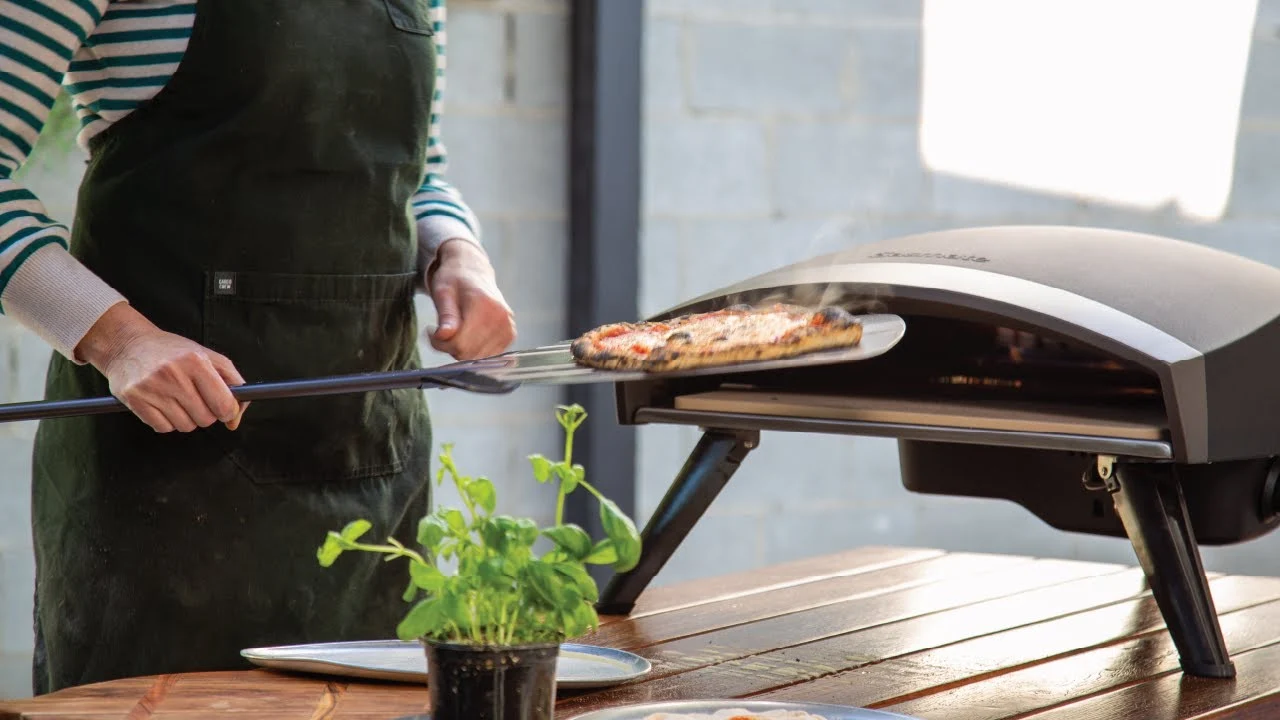
GASMATE’s Portofino 16″ is a gas-powered built-in pizza oven ideal for outdoor kitchens. It features stainless steel construction, a refractory stone floor for crisp crust, and a built-in temperature gauge. Its design makes it suitable for embedding within masonry or countertop islands. Because it’s gas-fired, it offers easy startup and control, while the interior dome retains heat, distributing it evenly.
This model is especially appealing in areas where wood burning may be regulated. The 16″ diameter fits standard pizza sizes. For installation, ensure proper support beneath and adequate venting.
2. Charlie Oven Charcoal Oven BBQ & Outdoor Kitchen
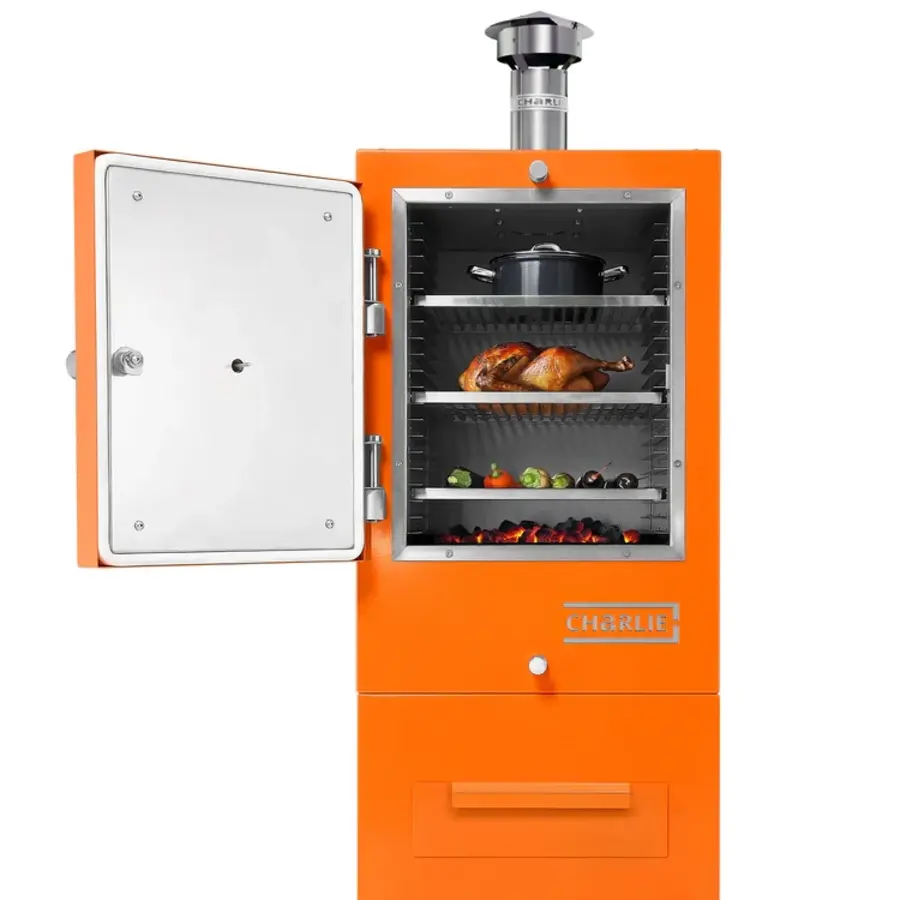
The Charlie Oven is a charcoal-fired oven designed for built-in outdoor kitchen installations. Its heavy-gauge steel construction, insulated walls, and chimney flue make it suitable for permanent placement. Users value the depth of wood flavor, capacity for artisanal crusts, and its grandeur as a centerpiece.
Because charcoal/wood requires airflow control and ash management, the Charlie Oven includes dampers and ash collection systems. It’s ideal for purists who enjoy fire control and authentic flavor.
3. The Cheeky Charlie Oven
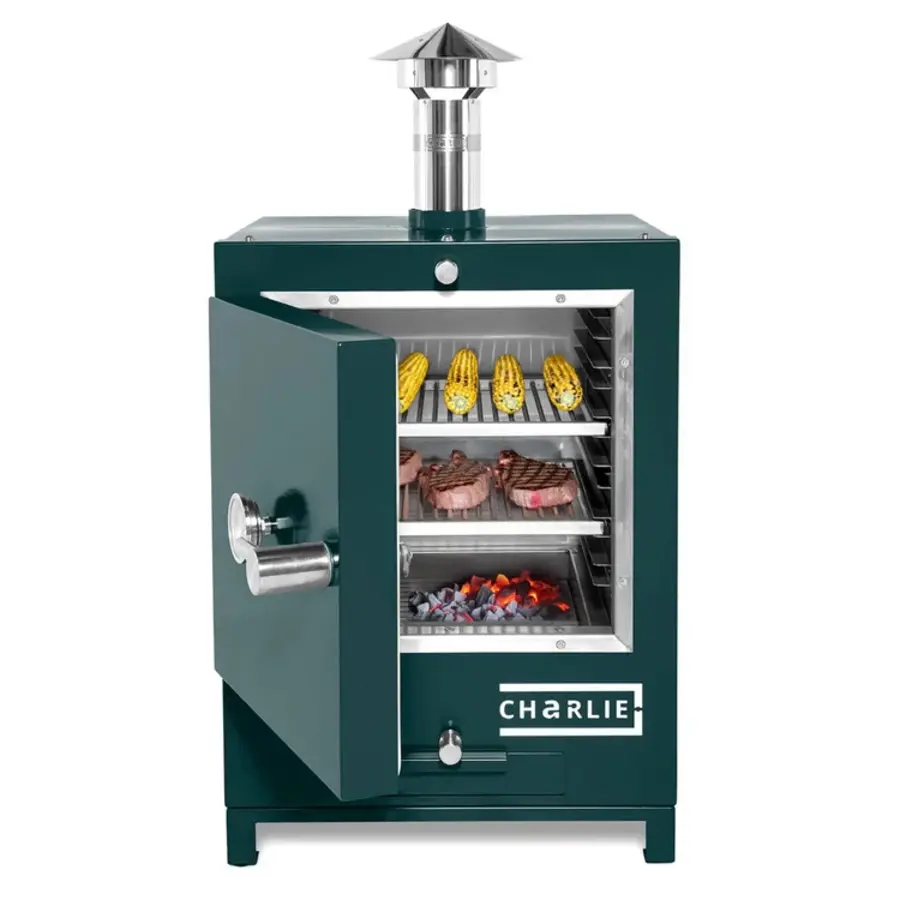
The Cheeky Charlie Oven is a compact, high-performance charcoal oven that elegantly fits into outdoor kitchen settings. It’s built to bake, roast, or grill with firewood, charcoal, or briquettes. Its modular design allows integration into custom enclosures.
For smaller patios or hidden installations, The Cheeky Charlie delivers full flavor in a smaller footprint. It includes a burn chamber, insulated shell, and chimney flue, giving flexibility without sacrificing performance.
4. Nexgrill Cast Aluminum 12‑Inch Propane Pizza Oven
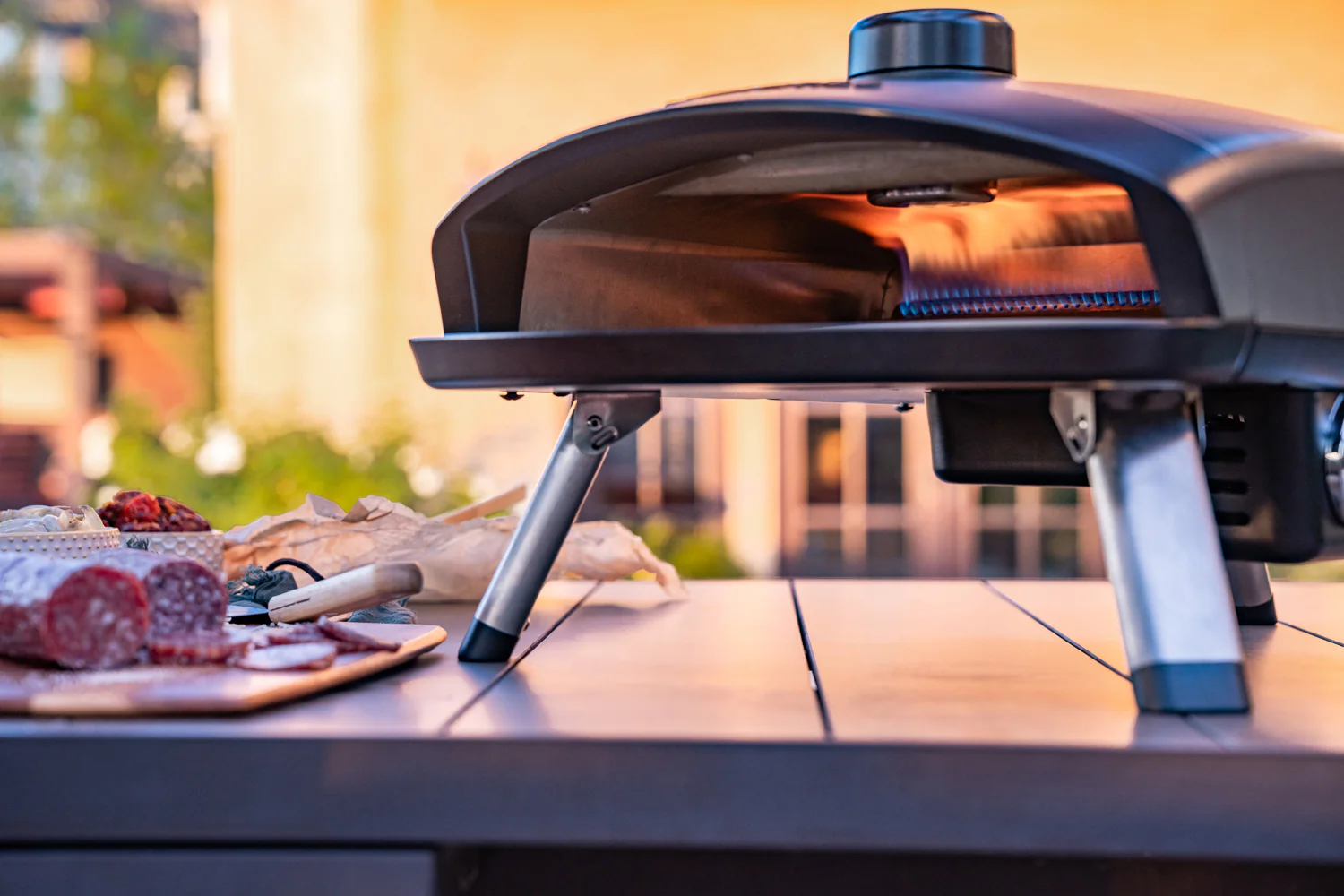
Nexgrill’s Cast Aluminum 12″ propane oven is ideal for countertop or built-in modules where weight is a concern. It heats rapidly, thanks to the lightweight aluminum shell, and includes a stone floor. It operates with propane, making it convenient in regions without natural gas.
While smaller than masonry ovens, it’s well-suited for homes that want a pizza module embedded without heavy structural support.
5. PIEZANO Crispy Crust Electric Pizza Oven
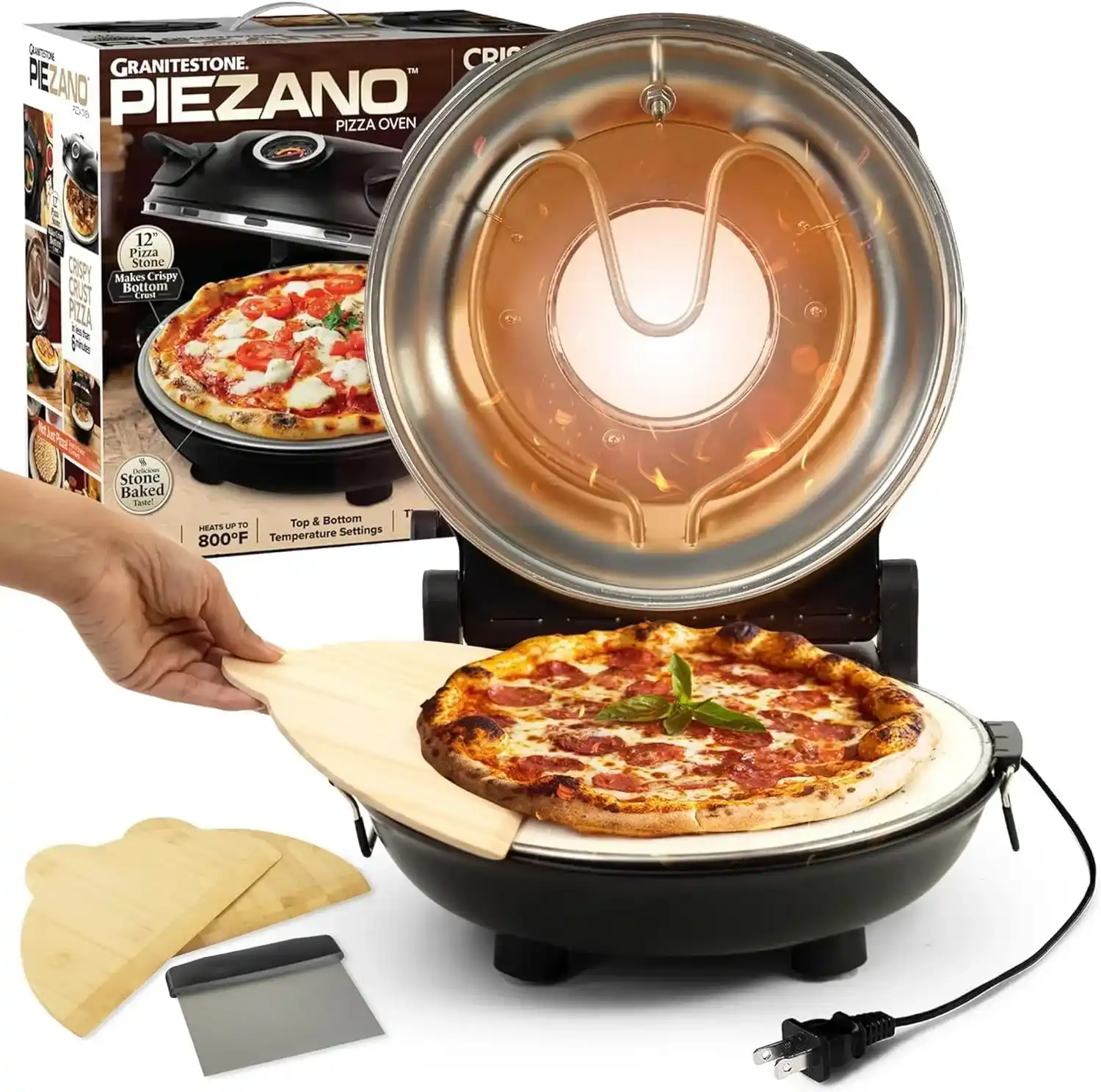
The Piezano Crispy Crust is an electric pizza oven that can be built into cabinetry under protected areas (e.g., covered outdoor kitchens). It features dual heating elements and a crisping stone floor for even results. Electric models offer clean operation, simple control, and fewer ventilation demands.
Though limited by power supply and weather exposure, this option works well in climates where electric ovens are allowed and safe from rain or direct elements.
Use Cases & Problem Solving
Family & Casual Night Use
Families seeking ease and fun benefit when the pizza oven is built into their outdoor kitchen. Rather than ordering delivery, they can make custom pizzas together, enjoying fresh pies and quality time outdoors. It solves the problem of limited indoor oven performance and adds joy to daily life.
Entertaining & Social Gatherings
For homeowners who host events, a built-in pizza oven allows cooking multiple pizzas rapidly, keeping guests entertained and fed. It transforms your backyard into an authentic pizzeria experience, enhancing the social ambiance. This solves the issue where portable ovens or grills struggle to keep pace with large groups.
Urban or Compact Outdoor Spaces
Even in modest urban patios or rooftop terraces, compact built-in pizza ovens (like Nexgrill or electric models) enable gourmet cooking without massive installations. The modular nature allows integration where full masonry may not be feasible, solving the constraint of limited space.
Luxury Custom Builds
High-end custom homes or resorts incorporate a fully integrated pizza kitchen, wood, gas, or hybrid in stonework with matching countertops, lighting, and entertainment zones. This offers an immersive culinary environment, distinguishing the home and solving the demand for premium outdoor living experiences.
Climate or Fuel-Restricted Areas
In neighborhoods with restrictions on wood burning, built-in gas or electric pizza ovens provide legal, high-performance alternatives. This addresses the issue of regulatory compliance while still enabling high-heat pizza cooking. It lets you enjoy the oven experience without violating local codes.
How to Buy & Install a Built-In Pizza Oven Kitchen
Steps to Purchasing
-
Choose your fuel type (wood, gas, electric) based on convenience, flavor, and local regulations.
-
Select a size and capacity that fits your cooking habits.
-
Order samples or visit showrooms to inspect materials.
-
Ensure compatibility with your kitchen’s structural base and ventilation.
-
Buy from authorized dealers to keep warranties valid.
Installation Tips
-
Build a strong foundation with reinforced concrete or block support.
-
Include insulation and safety clearance layers.
-
Install chimney/flue with proper height and clearance.
-
Provide a chimney cap to block rain ingress.
-
Seal joints with high-temperature mortar.
-
Test airflow and combustion before full use.
Where to Buy & Sample Links
You can purchase built-in pizza ovens from specialized outdoor kitchen retailers or directly from brands. And similar for other brands (Charlie Oven, Nexgrill, Piezano). Always verify shipping to your region, warranty coverage, and installation support.
Frequently Asked Questions
Q1: Which fuel type is best: wood, gas, or electric?
Each has trade-offs. Wood gives authentic flavor and very high temperatures, but requires fire control and venting. Gas/propane offers convenience, quick start, and easier regulation. Electric is clean and simple, but it depends on power capacity and may not reach extreme heat.
Q2: How long does a built-in pizza oven last?
A high-quality masonry or steel-built oven can last decades. With proper maintenance, insulation, and weather protection, many last 20–40 years or more, often outlasting many appliances.
Q3: Do I need permits or codes for a built-in pizza oven?
Yes. Especially for wood-fired units, local building codes or fire regulations often require setbacks, chimney height, and materials compliance. Portable units may be exempt, but always check local authorities before installation.
